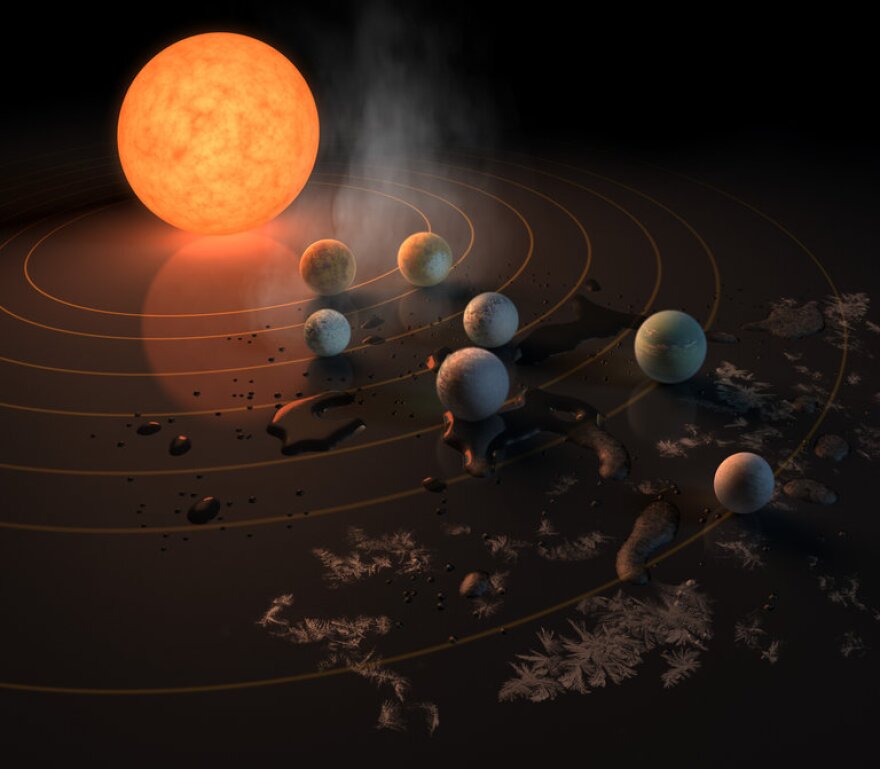Are we alone in the universe? The discovery of TRAPPIST-1 and its seven Earth-like planets could be moving the needle on the answer.
The TRAPPIST-1 star system is relatively close to our solar system, about 40 light years, or 235 trillion miles, away in the constellation Aquarius. And, because they are not in our celestial neighborhood, they’re called “exoplanets.”
“This was a collaboration between several different observing programs to detect the first of these,” said Astronomer Wayne Wooten at Pensacola State College. “And then the bigger the telescope, the more of these planets we brought in.”
NASA's Spitzer Space Telescope located the solar system: seven Earth-like planets surrounding a single star, three of which might be habitable in a so-called “temperate zone” Wooten calls them “Goldilocks planets.”
“The area there where the sun is always low in the sky, where it’s neither too hot nor too cold,” Wooten said. “And you could probably have a lot of liquid water certainly on three of these planets. And under the right conditions, probably on some that are even closer, or further, from the Trappist star.”
That star is a borderline sun, at best. Wooten says anything cooler is normally referred to as a “brown dwarf,” of which there’s debate over whether such a body should be considered a star.
Because of the star’s gravitational pull, the seven planets’ orbits are relatively close and only one side of the planets perpetually faces their sun. Scientists say they are rocky planets, which are more likely to contain liquid water.

Back to the question “Are We Alone?” Wooten says there’s a much closer possibility of life on what appears to be a hospitable planet, which is much closer than those in the TRAPPIST system.
“The very closest star to us, Proxima Centauri, has a ‘Super Earth,’ a little bit bigger than we are, orbiting within its eco-sphere 43 million light years away,” Wooten said. “So this is like ten times closer than TRAPPIST, but what makes TRAPPIST so interesting is, you’ve got a whole bunch of them to play with.”
For now, TRAPPIST is a solar system too far. According to NASA, New Horizons, at 32,000 mph the agency’s fastest spacecraft, would take more than 800,000 years to get there.
Even though the idea of traveling to TRAPPIST is out of the question, scientists do say the system is close enough that they can study the planets’ atmosphere’s relatively easily – which could lead to evidence of life on them.





